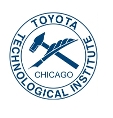From all 29 test sequences, our benchmark computes the commonly used tracking metrics CLEARMOT, MT/PT/ML, identity switches, and fragmentations [1,2].
The tables below show all of these metrics.
| Benchmark |
MOTA |
MOTP |
MODA |
MODP |
| CAR |
84.83 % |
85.21 % |
85.63 % |
88.28 % |
| Benchmark |
recall |
precision |
F1 |
TP |
FP |
FN |
FAR |
#objects |
#trajectories |
| CAR |
88.76 % |
98.02 % |
93.16 % |
33634 |
681 |
4260 |
6.12 % |
38414 |
1155 |
| Benchmark |
MT |
PT |
ML |
IDS |
FRAG |
| CAR |
73.08 % |
24.15 % |
2.77 % |
275 |
759 |
This table as LaTeX
|
[1] K. Bernardin, R. Stiefelhagen:
Evaluating Multiple Object Tracking Performance: The CLEAR MOT Metrics. JIVP 2008.
[2] Y. Li, C. Huang, R. Nevatia:
Learning to associate: HybridBoosted multi-target tracker for crowded scene. CVPR 2009.


